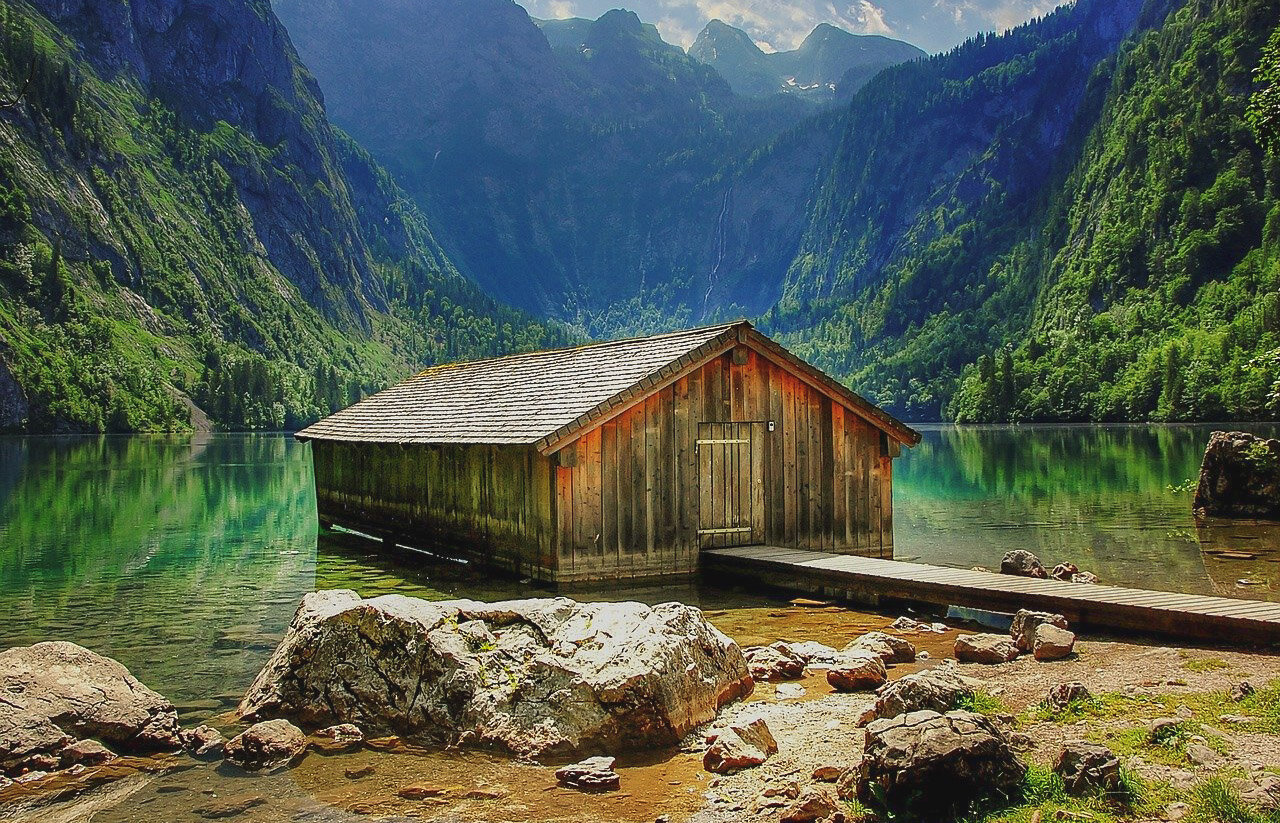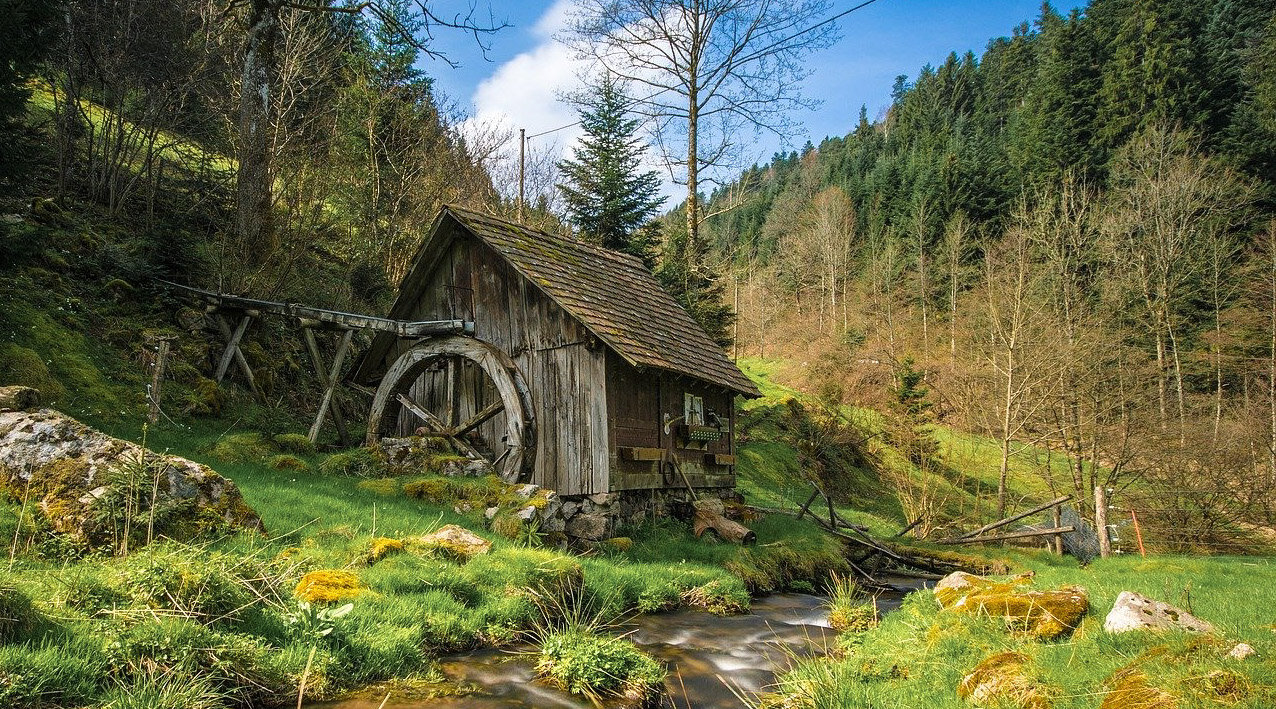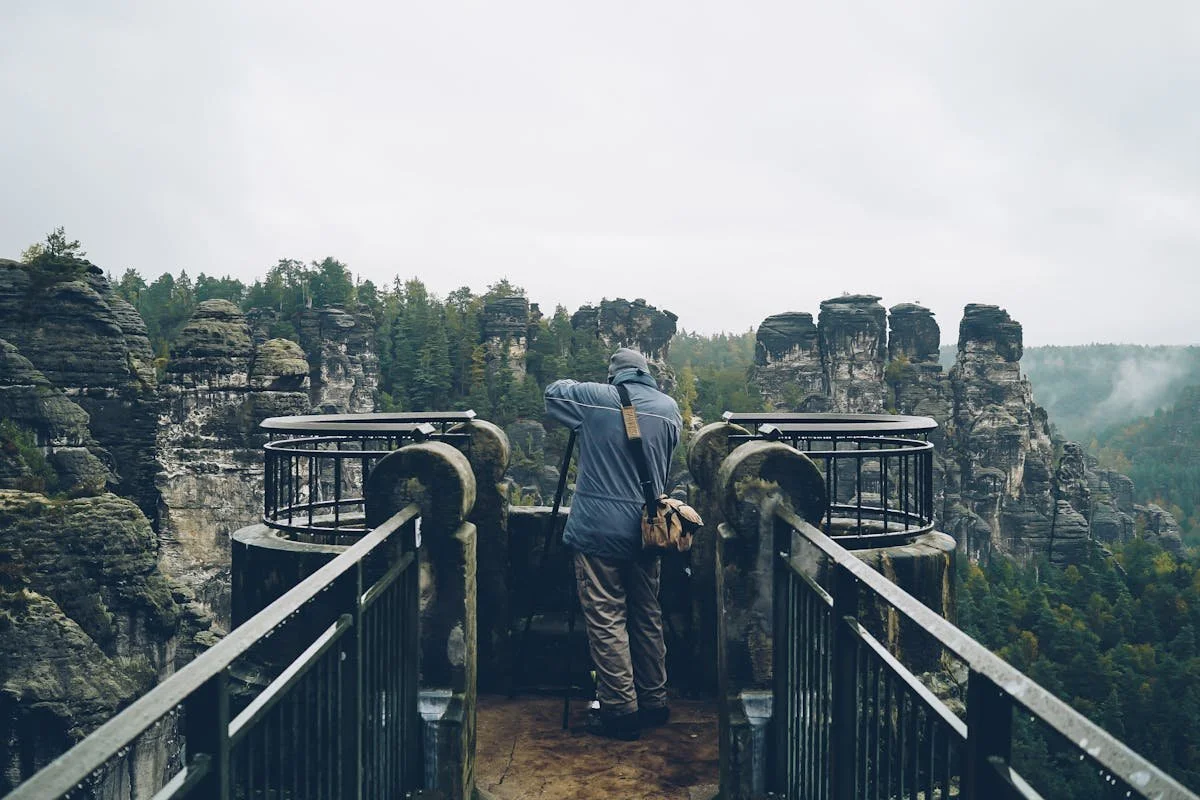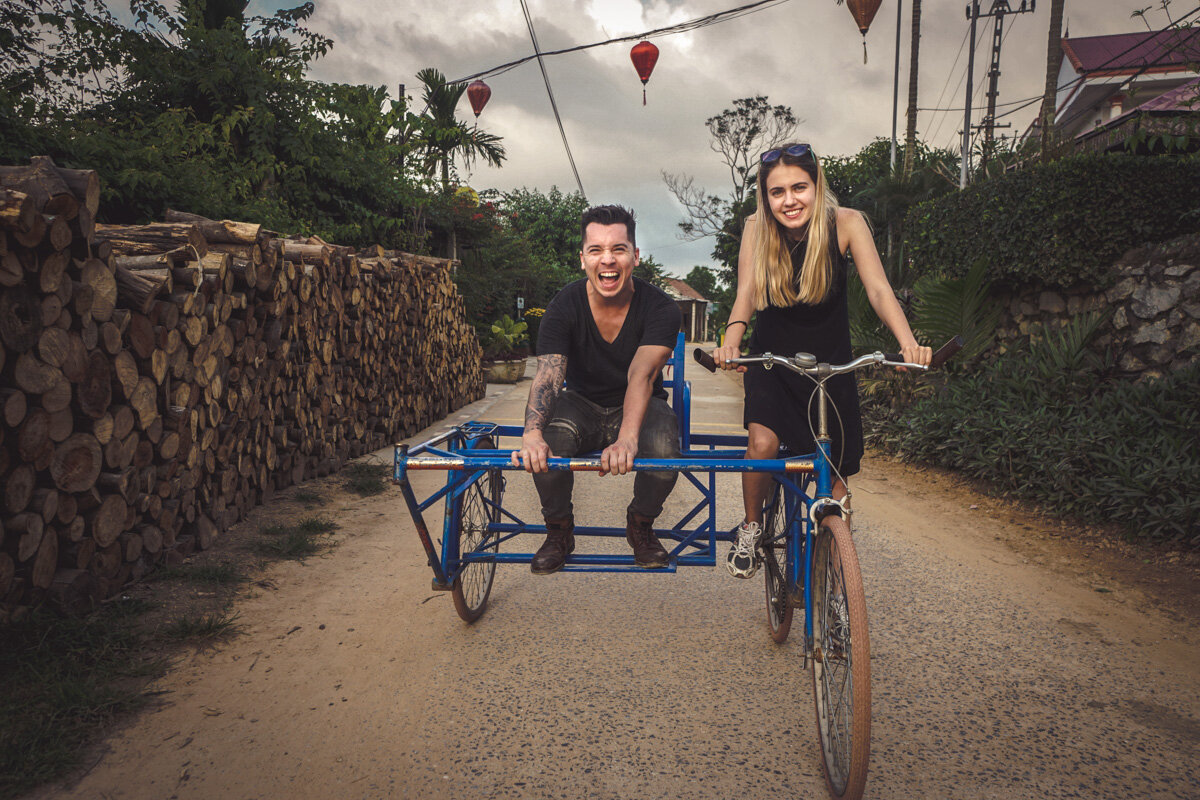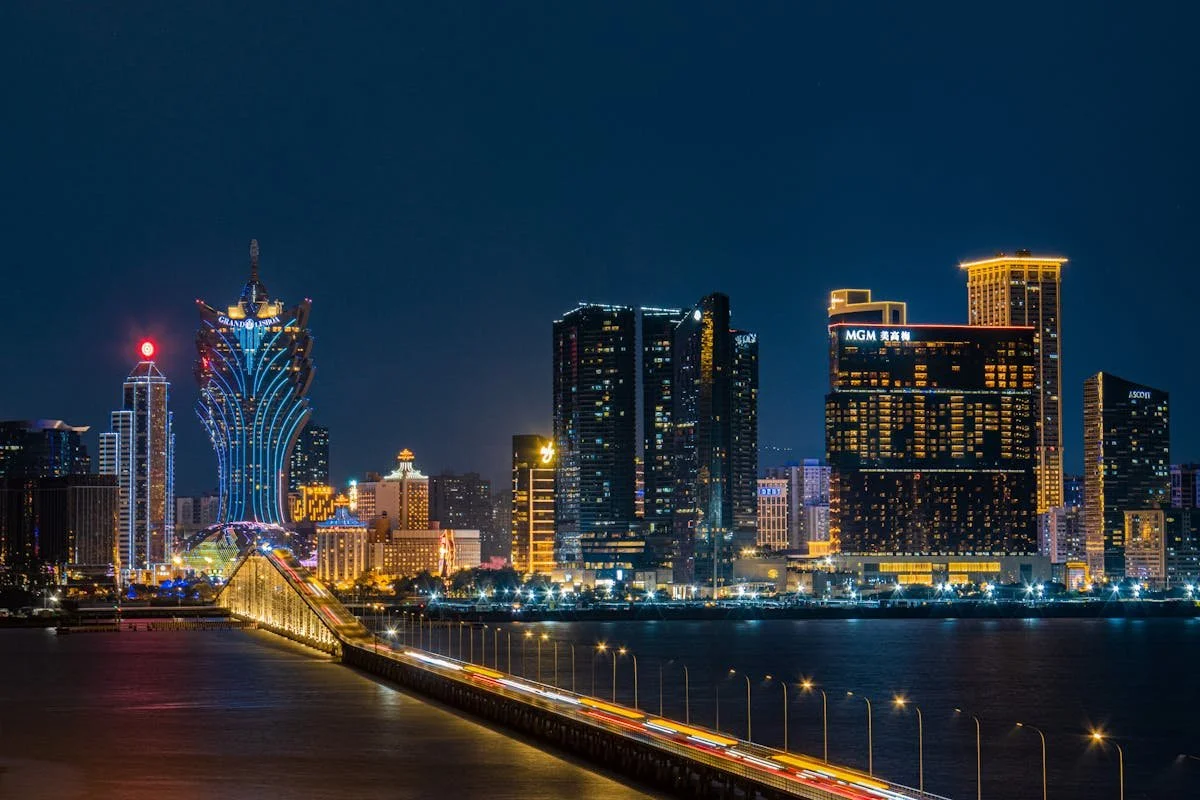Natural wonders of Germany
/Germany (Deutschland) is a fertile land with fabulous natural sites, majestic snow-capped peaks of the Alps, winding Rhine, and glacial lakes surrounded by emerald vegetation. For many centuries, it has attracted the attention of famous writers and artists who, inspired by the beauty of this land, created their immortal works. Now we also have a chance to explore Germany’s natural wonders and witness the beauty of this land with our own eyes.
Obersee Lake
There are some secluded places even in the popular alpine region in the south of Germany. One of them is Lake Obersee located in the National Park Berchtesgaden in Bavaria, near the border with Austria.
Bavaria is famous not only for its great beer but also for its wonderful nature: the Alps, crystal clear lakes and much, much more.
Overall, in this region you will find some of the best nature in Germany with Obersee being one of the most majestic lakes in Bavaria! It is surrounded by mountains and is hidden from a human eye. The size of the lake is 473 km² with a maximum depth of 51 meters and an average depth of about 30 meters.
The water of the lake is so clean and calm that you can see the reflection of the surrounding peaks and the rocky bottom for a few meters deep.
To get there take a boat through the Lake Königssee to the pier Saletalm, and then walk for 15-20 min along the path. This place is very popular among tourists who come here to admire German nature, but somehow it doesn’t ruin its magical atmosphere!
At the far end of the lake, you can see another amazing natural wonder – waterfall “Rothbach Wasserfall”. The height of the waterfall is about 470 meters and it is one of the highest waterfalls in Germany. If you have time, make sure to take a walk to it and if you don’t have time...well maybe you are doing something wrong.
Location: Obersee, Schönau am Königssee, Germany
The Externsteine
The natural sites in Germany are widely known for the alpine scenery, but there are other beautiful mountains here too. The Externsteine is an impressive rock formation located in the Teutoburg Forest in the German state of North Rhine-Westphalia. Throughout the years, this mysterious place has been used by adepts of various religions and practices: paganism, Christianity and later Nazism.
The Externsteine ensemble consists of five limestone pillars (the tallest of which is 37.5m high) and contains a number of astronomical alignments and other fascinating features. Over the centuries the pillars have been decorated by humans: drilled holes, stairs, and platforms that serve no clear purpose; and a large space designed to face the midsummer sunrise. Now it is one of the most gorgeous German landscapes!
The Externsteine is located just 10 kilometers from the city of Detmold, so that’s where you need to get first. A tourist bus number 792 will take you straight to the Externsteine. In addition, you can take the train to the station Horn-Bad Meinberg and walk three kilometers on foot.
You can also get on regular buses from Detmold or other nearby cities, use bahn.de or kvg-lippe.de to check the route. Don’t forget to download Moovit travel app if you are planning on getting around by bus.
We arrived early in the morning at the Horn-Bad Meinberg railway station and walked for about 3 kilometers. There is a ticket office near the entrance, but since it was early in the morning, there was no one at all - neither workers nor tourists. Apparently, a ticket is needed only if you want to climb the stairs to the top of the rocks. The rocks themselves are located right at the edge of the forest and you can approach them freely.
The Externsteine is open daily 9am-6pm (sometimes open until 7pm).
Location: Infozentrum Externsteine, Externsteine Straße 35, Horn-Bad Meinberg, Germany
Lake Blautopf
Germany is not particularly known for its beaches or seaside resorts (although they exist). Nevertheless, there are enough natural attractions in Germany related to water. One of them is Lake Blautopf in the city of Blaubeuren which is among major physical landmarks in northern Germany. It has become one of the famous landmarks in Germany due to its bright blue water, which contrasts beautifully with the dense forest around. This fascinating blue color varies in intensity due to weather and is the result of the physical properties of the nanoscale limestone densely distributed in the water.
The area around is riddled with caves and sinkholes and Blautopf is actually the place where Germany’s largest underground spring surfaces from a cave. Diving in Blautopf is accessible strictly to experienced and well-trained divers and since recently the access became even more restricted due to high danger of these waters.
You can easily take a stroll around, the lake is freely accessible and always open like many other beautiful natural wonders in Germany.
What else can you do in this area? You can visit Blaubeuren Monastery that’s located right on the lake, trek uphill along the walking paths and enjoy the view of Blaubeuren and Lake Blautopf located downhill; and finally, just enjoy traditional German food in one of the local taverns!
Location: Blautopf Blaubeuren, Germany
Partnach Gorge in Garmisch-Partenkirchen
Many regions of Germany are perfectly suitable for hiking due to the country’s impressive landscapes: rivers, forests, mountains, and medieval castles. Partnach Gorge is situated on the territory of Garmisch-Partenkirchen ski resort in Bavaria and is the starting point for numerous hikes through this area. It resembles underground caves from ‘The Lord of the Rings’ with its wild waterfalls, water rapids, and tranquil water basins. The winding stream at the bottom of the gorge runs between two sides of almost sheer cliffs that form a kind of corridor along it.
The length of the gorge is about 1 km and the height of the walls reaches almost 90m. There are many small waterfalls in the canyon that originate from the glaciers of the highest mountain in Germany, Zugspitze, and flow into the rough mountainous river Partnach.
The gorge is open all year round and is worth visiting at any time of the year. In spring, there are abundant waterfalls; during the summer, the river calms down and the entire gorge is wrapped with greenery of flowers and trees; fall brings out beautiful color in the leaves; and in winter the waterfalls freeze turning into huge stalactites, and the torches reflect on the ice creating a magical atmosphere.
You can get to Partnach Gorge by train from Munich to Garmisch-Partenkirchen (1.5 hours), and then walk for 40 minutes surrounded by beautiful landscapes of the German Alps. This place is a perfect German countryside that can also be reached by car and there is parking at the beginning of the trail.
For a lunch break, make sure to try Spaetzle noodles that can be served as an independent dish or as a side.
Besides that, Garmisch-Partenkirchen has Italian restaurants on every corner! We recommend La Baita restaurant where you will find your favorite Italian pasta.
The Black Forest
The Black Forest (Schwarzwald) got its name from the dark and deep color of evergreen trees growing here in staggering numbers. Despite its gloomy, but romantic name, this region, located in Baden-Württemberg, is also rich with open sunny slopes and farmlands.
The Black Forest is the name for the whole region that includes several cities with the forest occupying 60% of the territory. Lead and silver were once mined in the forest and it is still rich in granite and cobalt.
We believe that the Black Forest is the most ecologically significant among Germany’s natural attractions. Schwarzwald’s nature is the best in Germany in terms of diversity – visitors can find many waterfalls, ravines, lakes, meadows, and breathtaking panoramas of mountains and forests. The Black Forest is one of the last remaining natural landscapes in Germany. It’s a natural habitat for wild boars, rare three-toed woodpecker, falcon, lynx, pygmy owl, and many other animals.
Don’t bypass the Black Forest if you love to conquer the peaks. There are a few peaks where you can see fabulous views of the whole area, deespite them being not that high (the highest mountain Feldberg reaches 1493 meters). If you are lucky with the weather, from the Feldberg mountain you will see the Alps and the serene valley of the Vosges.
You can feel the peace and serenity near one of the most famous Black Forest lakes – Titise. It is a 2km long crystal blue lake with its shores covered with soft, tender greens, like a carpet. There you can swim, relax on the golden sandbanks, go boating, fishing, and in winter – feel like a real figure skating star.
Location: Black Forest, Todtnau, Germany
Usedom Island
Usedom Island, one of the natural wonders of Germany, is a must-visit that is accessible from any part of Germany. From Hamburg and Berlin, the InterCity trains are connected to the cities of Stralsund and Zussow, where UBB trains await to take passengers through the Wolgast Bascule Bridge and along the coast of the Usedom Island. One can find the train schedule at the Deutsche Bahn website and the UBB information on the official website. One can also book a flight to get to this paradise and whether you choose land or air, the island is to sure to enchant on your way there.
Landmarks in Germany are not limited to famous landscapes and forests. Filled with world-class spas, wellness centers, and resorts, Usedom Island is the perfect place to take a real holiday where you can just lie back and be pampered.
Aside from being a luxurious vacation spot, the island of Usedom has the most beautiful natural attractions like the Singing Sea at Heringsdorf, where you are treated with natural light and sound show as the rolling waves create a singing sound as it brushes the sea during a colorful sunset. It is within one of the wicker chairs by the sea that you shall find one of the most calming places on earth.
With 14 nature reserves scattered all over the island, Usedom Island has a variety of trails fit for both seasoned hikers and bikers as well as beginners. The easiest and one of the most beautiful routes is the 5-mile trail from Heringsdorf to Basin which boasts of stunning views of the coastline and the fascinating architecture of the Wilhelminian Villas. And, after a long walk, don’t forget to treat yourself to one of Usedom Island’s finest restaurants and enjoy some of the best seascape nature in Germany.
Location: Usedom Island, Germany
Contributed by Karolina & Patryk Klesta of Lazy Travel Blog
The Bodensee
The nature in Germany is famous for its lakes. The Bodensee, or Lake Constance as it's known in English, is actually two separate lakes joined together by the Rhine river. The Obersee, or Upper Lake, is by far the larger of the two and sits at the triple border between Germany, Switzerland and Austria. The Untersee, or Lower Lake, lies further west but still runs right between Germany and Switzerland, serving as the boundary between the two countries. There are lots of beautiful towns and villages to be explored along the shores of the lake.
In the summer, Lake Constance is very popular with outdoors enthusiasts, and with hikers and cyclists in particular. There are lots of great paths suitable for all levels and ages, and those with enough time and energy can even make a full 260-kilometer loop around the lake. Mainau Island and Reichenau Island are both worth a visit, the former for its castle and flowers, and the latter for its medieval abbey that was once home to the largest manuscript workshop in Europe.
However, my favorite visit to the Bodensee was actually in the winter, when I attended the "Weihnachsmarkt am See" in the city of Konstanz. This translates as "Christmas Market on the Lake", and the market really is held not just on the shores of the lake but also on the lake itself! Or, more specifically, on a "Christmas Ship" moored in the harbor. Browsing the market stalls and warming up with a glass of mulled wine now and then is one of my favorite ways to celebrate the holidays.
Location: The Bodensee (Lake Constance), Germany
Contributed by Wendy of the Nomadic Vegan
The Zugspitze
It’s quite easy to find natural beauty in Germany even on high altitudes. The Zugspitze in Southern Germany is the country’s highest mountain and you can get virtually to the summit to enjoy the cool fresh air and amazing views. We got to the summit by taking the cogwheel train from Eibsee station and then the cable car to the mountaintop, which we’d highly recommend as it was fantastic!
The cogwheel train ascends much of the mountain using the toothed track in the center of the rails for traction which allows it to ascend far more steeply than a normal train. Just before the train disappears into a tunnel for the final part of the ascent, it stops so you can get out and take in the scenic places in Germany, including Lake Eibsee and its deep turquoise water. You’ll definitely want to have your camera ready for this stop.
Back on board, the train takes you most of the rest of the way up the mountain inside a tunnel. You then transfer to a cable car which takes you almost to the very summit of the mountain. The actual summit is only accessible to qualified climbers, but it’s not much more than 20 feet higher than where the cable car will drop you off. You can see its location clearly as it is marked with a summit cross.
Aside from the journey up the mountain, something we didn’t expect was to be able to walk across to Austria at the top of the mountain! No passport checks just a “Herzlich Willkomen in Tirol” sign and you are in another country.
If you want to visit the top of Germany for yourselves, trains run every hour throughout the day on the cogwheel train.
Location: The Zugspitze, Germany
Contributed by Lee and Stacey of One Trip at a Time
The Source of the Danube, Donaueschingen (Baden-Württemberg)
In the coldest region of Germany (die Baar) emerges one of the most international rivers in the world: the Danube River. In the town itself, it’s possible to visit the karst spring that’s the source of the Danube (Donauquelle). But the real river starts a few kilometers downstream from that source at the confluence (Zusammenfluss) of the rivers Breg and Brigach. From that point forward, this river flows 2860 kilometers downstream through or past ten countries—from the Black Forest to the Black Sea.
We put our inflatable kayak in that confluence in Donaueschingen to paddle 1250 kilometers from European spring till autumn in 2019 – a journey we will continue and conclude in 2021. In the German part, the river flows through other magnificent landscapes all the way until the border with Austria at Passau. This river has held great significance throughout European history, from battles fought to borders decided.
Inside Donaueschingen, you can visit the main Danube-related sights for free. At the source, there’s a statue that symbolizes ‘mother’ Baar pointing her ‘daughter’ Danube in direction east. The source looks a bit artificial with all the design, but this magical looking pond is a real spring that spurts out between 15 to 70 liters of water per second. From the karst spring, it then flows into a short underground river that drains into the Brigach. The confluence of the Breg and Brigach happens 1.5 kilometers downstream from that point.
To visit Donaueschingen and learn about this majestic river, you can take a train journey on the scenic Schwarzwaldbahn. There are daily trains from Cologne and Constance. Donaueschingen is the start (or finish) of the famed Donauradweg (Danube bike path) if you’re keen on cycling.
Location: The Source of the Danube, Donaueschingen
Contributed by Iris Veldwijk from Mind of a Hitchhiker
Saxon Switzerland National Park
Saxon Switzerland National Park is a unique natural landscape in Saxony with wild scenery that has developed over millions of years into the wonder that it is today. Bordering the Czech Republic’s Bohemian Switzerland National Park, Saxon Switzerland National Park is a magical natural wonderland that features everything from wildflower meadows and moors to gorges, mountains, and forests. This varied and rugged landscape provides a safe haven for unique birds, plants, and wildlife as well as being a playground for free-climbers and hikers to explore.
One of the highlights of the Saxon Switzerland National Park is the Elbe sandstone formations also known as the City in Stone. This part of the park sees huge sandstone peaks rise up into the sky, with the seafloor from the Cretaceous period sitting below which makes it one of the most impressive natural landmarks in Europe. Here, the Bastei Bridge now passes through the City in Stone, above the Elbe River, so that travelers can take in these breathtaking surroundings.
Visitors have the option of exploring Saxon Switzerland National Park on foot, bike or by boat and can witness sights such as the Königstein Fortress and the National Park Information Centre.
It's best to access Saxon Switzerland National Park by public transport, either by taking the train to Bad Schandau, Sebnitz, and Neustadt, taking the Kirnitzschtal tram or by hopping on a bus which runs to the park. This allows you to fully appreciate nature while inside the park without having to worry about driving.
Location: Saxon Switzerland National Park
Contributed by Chrysoula from Historic European Castles
Eibsee
Eibsee is one of the most beautiful places in Germany. The lake is located by the foothills of Zugspitze, which is the tallest mountain in Germany. The lake area is known for its pure air quality and emerald green and blue color of the water. There are several islets that can be reached by boat or kayak. Eibsee also features a circular loop trail that is a very easy hike around the lake.
The easiest way to get here is by car, but there are also buses running from nearby towns and the closest train station is Garmisch-Partenkirchen or the local train station by the lake. However, regional trains stop in Garmisch-Partenkirchen, and from there it's easy to get a bus to Eibsee.
Two Germany geographical landmarks, Eibsee and Zugspitze make this region unique. The views of Zugspitze gorgeously reflect in the deep blue/green water. During wintertime, the lake gets frozen from time to time, but it's still enjoyable to come here for the fresh air and walk. The best time to visit Eibsee is during the summer when you can go kayaking and have a picnic at one of the islets. Spring and autumn are nice as well since it will be fewer visitors. There is also a hotel next to the lake where you can stay overnight, which is nice if you want to be here early in the morning to enjoy the quiet atmosphere and see the best reflections.
If you arrive by car, there is a big parking next to the lake where you can park all day for a fee.
Contributed by Alex from Swedish Nomad
Like it?! Pin it!


